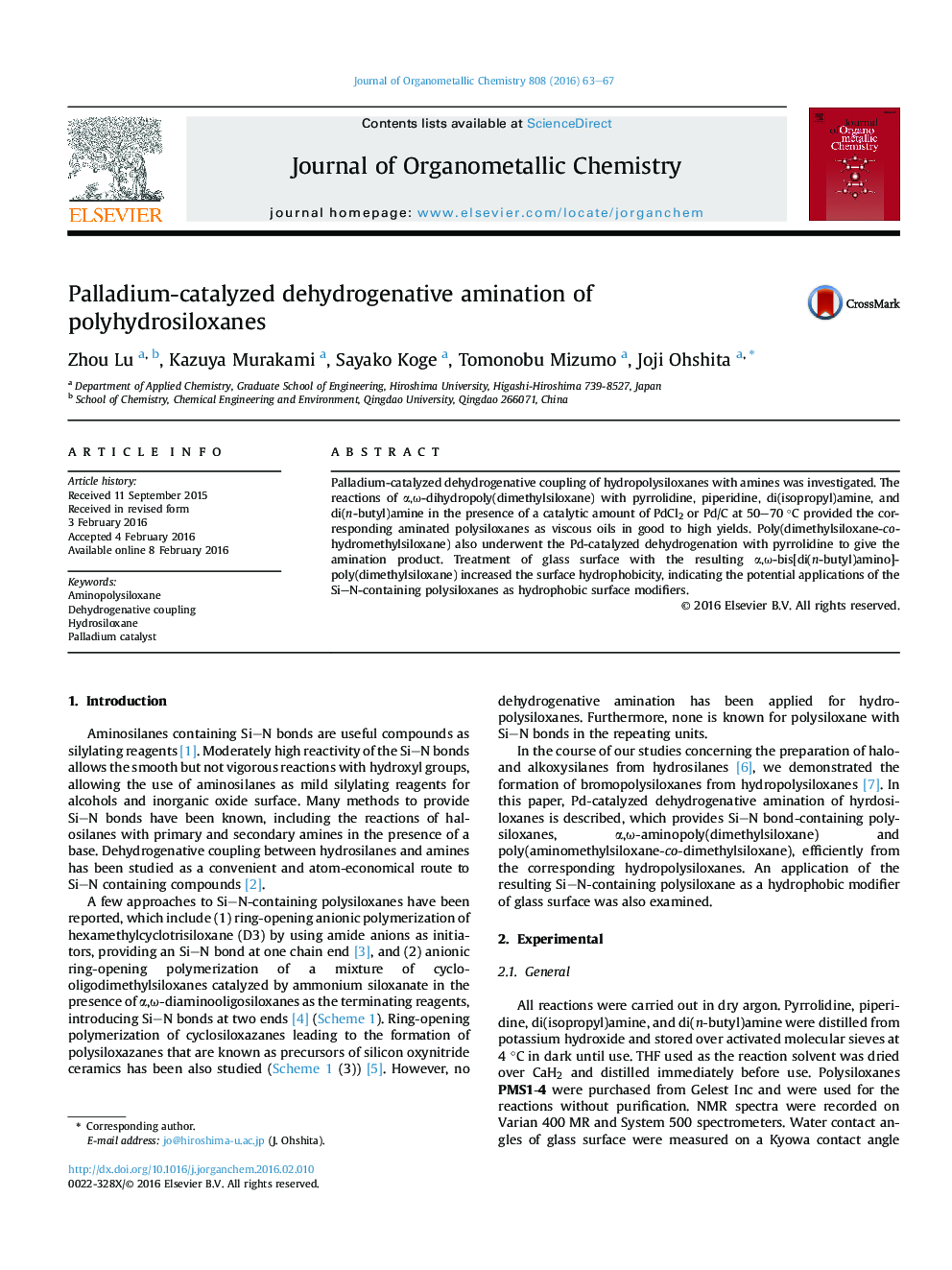| Article ID | Journal | Published Year | Pages | File Type |
|---|---|---|---|---|
| 1324632 | Journal of Organometallic Chemistry | 2016 | 5 Pages |
•Palladium-catalyzed dehydrogenative coupling of hydropolysiloxanes with amines afforded aminopolysiloxanes.•Aminopolysiloxanes were characterized by NMR spectrometry.•α,ω-Bis[di(n-butyl)amino]poly(dimethylsiloxane) thus obtained was used as a hydrophobic surface modifier of glass surface.
Palladium-catalyzed dehydrogenative coupling of hydropolysiloxanes with amines was investigated. The reactions of α,ω-dihydropoly(dimethylsiloxane) with pyrrolidine, piperidine, di(isopropyl)amine, and di(n-butyl)amine in the presence of a catalytic amount of PdCl2 or Pd/C at 50–70 °C provided the corresponding aminated polysiloxanes as viscous oils in good to high yields. Poly(dimethylsiloxane-co-hydromethylsiloxane) also underwent the Pd-catalyzed dehydrogenation with pyrrolidine to give the amination product. Treatment of glass surface with the resulting α,ω-bis[di(n-butyl)amino]poly(dimethylsiloxane) increased the surface hydrophobicity, indicating the potential applications of the SiN-containing polysiloxanes as hydrophobic surface modifiers.
Graphical abstractPalladium-catalyzed dehydrogenative coupling of hydropolysiloxanes with amines provided the corresponding aminated polysiloxanes as viscous oils in good to high yields. The resulting aminopolysiloxanes exhibited the potential applications as modifiers of inorganic oxide surface to increase the hydrophobicity.Figure optionsDownload full-size imageDownload as PowerPoint slide
